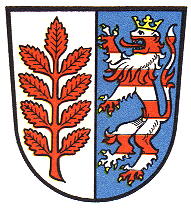Eschwege (kreis): Difference between revisions
Jump to navigation
Jump to search
Knorrepoes (talk | contribs) m (Text replace - "'''Origin/meaning :'''<br/>" to "====Origin/meaning====") |
Knorrepoes (talk | contribs) m (Text replace - "|width="15%"|50 px|right |} " to "|width="15%"|50 px|right |}<seo title="Wappen, Gemeindewappen" /> ") |
||
| Line 3: | Line 3: | ||
|width="70%" align="center" |'''Heraldry of the World<br/>Civic heraldry of [[Germany]] - [[Deutsche Wappen|Deutsche Wappen (Gemeindewappen/Kreiswappen)]]''' | |width="70%" align="center" |'''Heraldry of the World<br/>Civic heraldry of [[Germany]] - [[Deutsche Wappen|Deutsche Wappen (Gemeindewappen/Kreiswappen)]]''' | ||
|width="15%"|[[File:Germany.jpg|50 px|right]] | |width="15%"|[[File:Germany.jpg|50 px|right]] | ||
|} | |}<seo title="Wappen, Gemeindewappen" /> | ||
'''ESCHWEGE (ESW)''' | '''ESCHWEGE (ESW)''' | ||
Revision as of 19:16, 5 November 2012
| Heraldry of the World Civic heraldry of Germany - Deutsche Wappen (Gemeindewappen/Kreiswappen) |
ESCHWEGE (ESW)
State : Hessen
Incorporated into : 1974 Werra-Meissner Kreis
Origin/meaning
The arms were granted on March 23, 1937.
The right part shows the canting aspen leaves (Esche=aspen), which also appear in the arms of the city Eschwege.
The left part shows the lion of Hessen, as in the second part of the 13th century Eschwege and Boyneburg became a possession of the Counts of Hessen, which were raised to the rank of Princes, due to the new possessions. Since 1301 the area was the heartland of the Princes of Hessen.
Literature : Stadler, K. : Deutsche Wappen - Bundesrepublik Deutschland. Angelsachsen Verlag, 1964-1971, 8 volumes.

